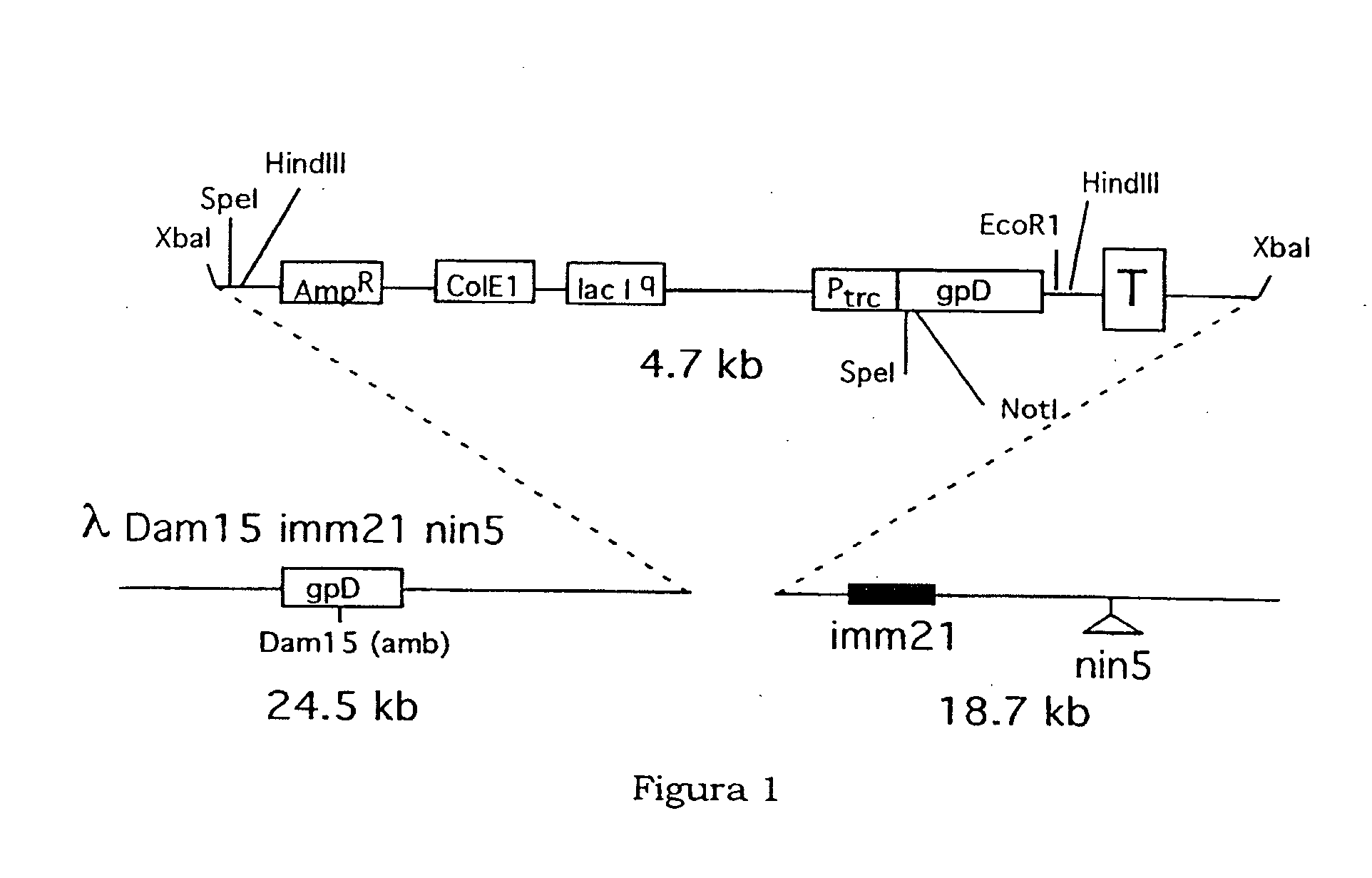Identification of specific tumour antigens by means of the selection of cdna libraries with sera and the use of said antigens in diagnostic imaging techniques
a technology of specific tumours and antigens, applied in the field of identification of specific tumour antigens, can solve the problems of insufficient mr, difficult identification of lesions, and inability to detect specific tumours using conventional methods, and achieve the goal of identifying specific tumours and reducing the risk of cancer
- Summary
- Abstract
- Description
- Claims
- Application Information
AI Technical Summary
Problems solved by technology
Method used
Image
Examples
example
Phages and Plasmids:
[0047] Plasmid pGEX-SN was constructed by cloning the DNA fragment deriving from the hybridisation of the synthetic oligonucleotides K108 5′-GATCCTTACTAGTTTTAGTAGCGGCCGCGGG-3′ and K109 5′-AATTCCCGCGGCCGCTACTAAAACTAGTAAG-3′ in the BamHI and EcoRI sites of plasmid pGEX-3X (Smith D. B. and Johnson K. S. Gene, 67(1988) 31-40).
[0048] Plasmid pKM4-6H was constructed by cloning the DNA fragment deriving from the hybridisation of the synthetic oligonucleotides K106 5′-GACCGCGTTTGCCGGAACGGCAATCAGCATCGTTCACCACCACCACCACCACTAATAGG-3′ and K107 5′-AATTCCTATTAGTGGTGGTGGTGGTGGTGAACGATGCTGATTGCCGTTCCGGCAAACGCG-3′ in the RsrII and EcoRI sites of plasmid pKM4.
Selection by Affinity
[0049] Falcon plates (6 cm, Falcon 1007) were coated for one night at 4° C. with 3 ml of 1 μg / ml of protein A (Pierce, #21184) in NaHCO3 50 mM, pH 9.6. After discarding the coating solution, the plates were incubated with 10 ml of blocking solution (5% dry skimmed milk in PBS×1, 0.05% Tween 20) for 2...
PUM
| Property | Measurement | Unit |
|---|---|---|
| volumes | aaaaa | aaaaa |
| volumes | aaaaa | aaaaa |
| volume | aaaaa | aaaaa |
Abstract
Description
Claims
Application Information
 Login to View More
Login to View More - R&D
- Intellectual Property
- Life Sciences
- Materials
- Tech Scout
- Unparalleled Data Quality
- Higher Quality Content
- 60% Fewer Hallucinations
Browse by: Latest US Patents, China's latest patents, Technical Efficacy Thesaurus, Application Domain, Technology Topic, Popular Technical Reports.
© 2025 PatSnap. All rights reserved.Legal|Privacy policy|Modern Slavery Act Transparency Statement|Sitemap|About US| Contact US: help@patsnap.com

